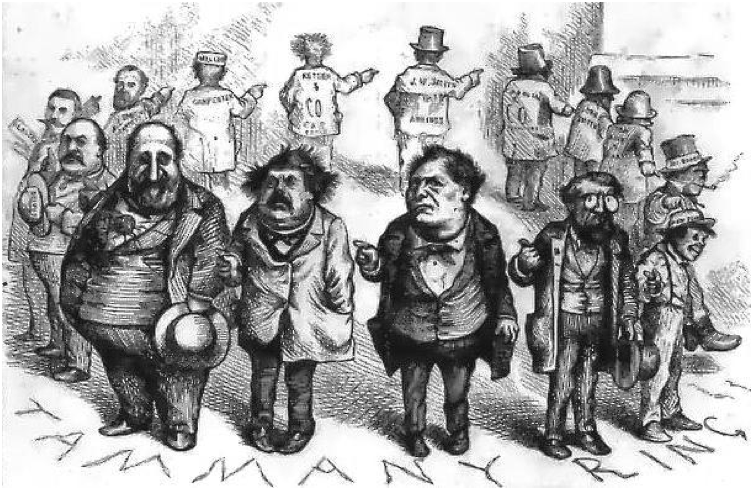CommentsPLATKIN ON PLANNING-In Los Angeles land use decisions appear to be the province of City Hall’s well-trained zoning specialists.
But appearances can be deceiving because elected officials guide this process at every step. For example, the City Councilmembers exert enormous control over plans, ordinances, and individual projects in their respective Council Districts.
This is why the following questions about the proposed Purple Line Extension Transit Neighborhood (Specific) Plan (TNP) are not just for City Planning staff. Their most important audience is the three members of the City Council whose districts include this proposed “plan.” They, not the zoning technicians, are in the driver’s seat.
- David Ryu, Council District 4
- Paul Koretz, Council District 5
- Herb Wesson, Council District 10
Question 1. Why does the TNP flout City Council directives to accelerate the updates of LA’s Community Plans?
During the Measure S campaign in late 2016 and early 2017, the City Council adopted a resolution directing the Department of City Planning to properly update LA’s 35 Community Plans over the next six years. As part of this program, the update of the Wilshire Community Plan is scheduled to begin in 2021, which is three years before the Purple Line Extension – located entirely within the Wilshire Community Plan -- begins operations.
Considering that the Mayor, the City Planning Commission, and the Department of City Planningall support this accelerated update program, why does the TNP break with this process? Why does it, instead, carve out a major section of the Wilshire Community Plan to become a separate Transit Neighborhood (Specific) Plan two years before the Community Plan’s update?
Furthermore,according to City Planning, the Purple Line TNP will include numerous amendments to the Wilshire Community Plan’s official maps, population forecasts, goals, policies, and implementation programs (e.g., zoning). Not only will this complex preemptive ordinance undermine the later update of the Community Plan surrounding the TNP’s boundaries, but the TNP itself will also become a slip-shod specific plan ordinance. Why?
Question 2. Why aren’t other Purple/Red Line stations included in this planning process?
Since 1996, when the Purple/Red Line subway opened, only one station, Vermont-Western, has been overlaid with a City Council-adopted transit-oriented Specific Plan. Another subway station, Vermont-Wilshire, has streetscape improvements. All other stations, such as Beverly-Vermont, have languished as rudimentary subway entrances for over two decades.
Given this 22-year period without any transit planning for most of the Purple/Red Line subway, why does the TNP totally ignore these older subway stations? Why were the three stations scheduled to open in 2023 moved to the head of the line, and then targeted for extensive up-zoning through the Purple Line Extension Transit Neighborhood (Specific) Plan?
Question 3. Why haven’t existing Purple Line neighborhoods experienced a population, transit ridership, and construction boom?
During the past 22 years, the eastern half of the Wilshire Community Plan area has hadmore generous zoning than the western half, where the TNP would be located. It has also been in direct proximity to four open Purple Line stations. If TNP-style up-zoning around stations should promote Transit Oriented Development (TOD) real estate projects, why have these areas only experienced modest population growth and real estate development? More importantly, why hasn’t affordable housing trickled down in these neighborhoods, and why has local subway ridership been in long-term decline despite nearly two decades of generous zoning?
Question 4. Why doesn’t the TNP contain any first-last mile improvements to create Transit Oriented Districts/Communities?
METRO’s focus on transit planning is its First-Last Mile Strategic Plan, as well as its Transit Oriented Communitiespolicy document. LA City Planning’s focus is Complete Streets and Mobility Hubs, both prominently posted on City Planning’s home page. For both METRO and LA City Planning, the purpose of these policies and programs is to design and install the vast array of public improvements that increase accessibility to non-automobile transportation modes, especially busses and subways. These missing amenities should include bus shelters, kiss ‘n ride, park ‘n ride, sidewalk repairs and other pedestrian upgrades, landscaping and shade trees to create a sidewalk canopy, bicycle infrastructure, and way-faring signage. Why are these critically important features totally missing from the TNP, as well as in the surrounding neighborhoods examined in the TNP’s Draft Environmental Impact Report (DEIR)? Won’t this omission pass over many potential transit users already living in transit-accessible residential buildings close to the Purple Line Extension?
Question 5. Why are new Re-code LA zones being incorporated into the Purple Line Extension Transit Neighborhood Plan?
According to an interview in the August 2018 Planning Report, LA’s Planning Director, Vince Bertoni,declared that the new re:code LA zones will be implemented through Community Plan Updates. Why, then, does the TNP rebuff the Director of Planning’s approach, and instead, fold these still vague re-code LA zones into the TNP, several years prior to their and the Wilshire Community Plan’s preparation and adoption?
Question 6. Why has the TNP not included public outreach?
Community Plan updates are based on extensive community meetings with all local stakeholders, such as the 200 community meetings that the Department of City Planning hosted to prepare and adopt the South and Southeast Los Angeles Community Plan updates. Why did the TNP only organize several barely announced public meetings, and why were no local community groups notified of these meetings? Why did local community groups first learn of City Planning’s proposal to extensively increases building heights, mass, and density in the Miracle Mile/Museum Row area, the LaBrea corridor, the Pico-San Vicente corridor, the Fairfax corridor, and the LaCienega corridor at a July 26 open house, only two weeks before DEIR scoping comments were due.?
Question 7. Why does the TNP ignore frequent infrastructure failures in it project and surrounding DEIR areas?
At existing population and development levels, the TNP and surrounding DEIR areas are already suffering from frequent electrical blackouts, countless burst water mains, and ruptured sanitary sewers. Local streets are also subject to endless repairs, which barely manage to keep vital municipal infrastructure and service systems operational. If the TNP’s up-zoning triggers many new commercial, mixed use, and residential buildings, what guarantee is there that City of Los Angele can provide secure and reliable public services to local residents?
Furthermore, other critical infrastructure categories, such as emergency services and public schools, are also in dire straights. How can they serve the needs of an expanded population without major upgrades, all omitted from the TNP?
Question 8. Why does the TNP ignore the local area’s already deficient transportation-related infrastructure?
Other public infrastructure categories that play an essential role in promoting transit ridership are also in poor shape, and the TNP does not include any plans or funds for their repairs and improvement. For example, few existing bus stops have bus shelters. No bus stops have electronic signage to announce real time arrivals. Most sidewalks need to be repaired completely repaved. In some cases, they are so narrow that they are illegal. Many intersection corners do not have legally required ADA curb cuts. Few streets have bicycle lanes. Few sidewalks have bicycle racks. Most streets in the TNP and the adjacent DEIR areas have a haphazard urban forest with long stretches devoid of a shade-producing tree canopy. Above ground, utility lines abound, with no TNP proposals to underground these wires for both public safety and to create an appealing walking environment.
Question 9. Why does the TNP ignore the obvious, that future tenants will be upscale car owners and drivers?
The TNP’s underlying premise is that up-zoning is necessary to encourage the large residential buildings that will house the residents, visitors, and employees who fill subway cars. But, for developers to acquire these sites, they must pay top dollar, and their high land acquisition costs mandate expensive rents. The people who will eventually live and work in these buildings would, therefore, be well off, and they are the least likely demographic category to use mass transit. How, then, would this proposed specific plan actually increase transit ridership?
Question 10. Why doesn’t the TNP include a monitoring program?
Because the TNP does not contain any monitoringprograms, there is no way to determine that its underlying premises are valid. There is no way to confirm that up-zoning will produce large, new buildings, and there is no way to verify that future tenants in these building will ride buses and subways. Furthermore, why won’t there be any consequences if these TNP-induced buildings fail to produce increased transit ridership and affordable housing. Why should their entitlements and building permits be permanent, if their underlying rationale is bogus?
Question 11. Why did City Planning begin the Environmental Review process before the actual TNP project was finalized?
 The DEIR Scoping comment opened and closed before the TNP project had been detailed. So far, City Planning has only presented an up-zoning scheme, and it has not identified the many amendments to the Wilshire Community Plan listed in its DEIR Scoping Notice. The Notice to prepare the DEIR also indicates that the Specific Plan will incorporate zoning overlay areas and new re:code LA zones, but it has not identified the provisions of these new zones, especially reduced parking requirements. The TNP project alternative also has not identified which Miracle Mile Community Design Overlay District features will become part of the Specific Plan ordinance and who will enforce these design requirements.
The DEIR Scoping comment opened and closed before the TNP project had been detailed. So far, City Planning has only presented an up-zoning scheme, and it has not identified the many amendments to the Wilshire Community Plan listed in its DEIR Scoping Notice. The Notice to prepare the DEIR also indicates that the Specific Plan will incorporate zoning overlay areas and new re:code LA zones, but it has not identified the provisions of these new zones, especially reduced parking requirements. The TNP project alternative also has not identified which Miracle Mile Community Design Overlay District features will become part of the Specific Plan ordinance and who will enforce these design requirements.
While this list of critical questions is hardly the last word, they present enough serious issues that City Council offices must now take a stand. This is the time for them to exert leadership and clarify their position on the Purple Line plan. The time for Tweedle Dee and Tweedle Dum has ended.Do they support the Purple Line Transit Neighborhood Plan, glossing over this article’s list of obvious defects? Or, are they ready to end an elaborate up-zoning scheme masquerading as a transit plan?
This is not an issue where silence and feigned neutrality remain an option.
(Dick Platkin is a former Los Angeles city planner who reports on local planning controversies in Los Angeles for CityWatch.) Please send any comments or corrections to [email protected].) Prepped for CityWatch by Linda Abrams.
















